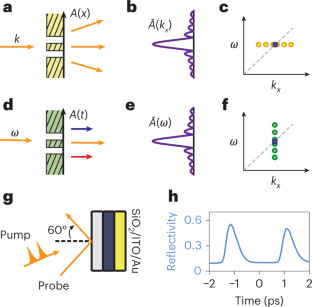2023-04-03 インペリアル・カレッジ・ロンドン(ICL)
今回、ロンドン帝国大学の物理学者たちが、空間ではなく時間の「スリット」を使って実験を行った。彼らはフェムト秒(1秒の1兆分の1)単位で特定の時間にだけ光を通す材料を使用した。これにより、光の時間的性質についてより多くの洞察が得られ、光を空間と時間の両方で微細に制御できる究極の材料を作るためのステップとなる。
この実験の詳細は、Nature Physicsに掲載されている。
<関連情報>
- https://www.imperial.ac.uk/news/244037/double-slit-experiment-that-proved-wave-nature/
- https://www.nature.com/articles/s41567-023-01993-w
光周波数における二重スリット時間回折法 Double-slit time diffraction at optical frequencies
Romain Tirole,Stefano Vezzoli,Emanuele Galiffi,Iain Robertson,Dries Maurice,Benjamin Tilmann,Stefan A. Maier,John B. Pendry & Riccardo Sapienza
Nature Physics Published:03 April 2023
DOI:https://doi.org/10.1038/s41567-023-01993-w

Abstract
Double-slit experiments—where a wave is transmitted through a thin double aperture in space—have confirmed the wave–particle duality of quantum objects, such as single photons, electrons, neutrons, atoms and large molecules. Yet, the temporal counterpart of Young’s double-slit experiment—a wave interacting with a double temporal modulation of an interface—remains elusive. Here we report such a time-domain version of the classic Young’s double-slit experiment: a beam of light twice gated in time produces an interference in the frequency spectrum. The ‘time slits’, narrow enough to produce diffraction at optical frequencies, are generated from the optical excitation of a thin film of indium tin oxide near its epsilon-near-zero point. The separation between time slits determines the period of oscillations in the frequency spectrum, whereas the decay of fringe visibility in frequency reveals the shape of the time slits. Surprisingly, many more oscillations are visible than expected from existing theory, implying a rise time that approaches an optical cycle. This result enables the further exploration of time-varying physics, towards the spectral synthesis of waves and applications such as signal processing and neuromorphic computation.



